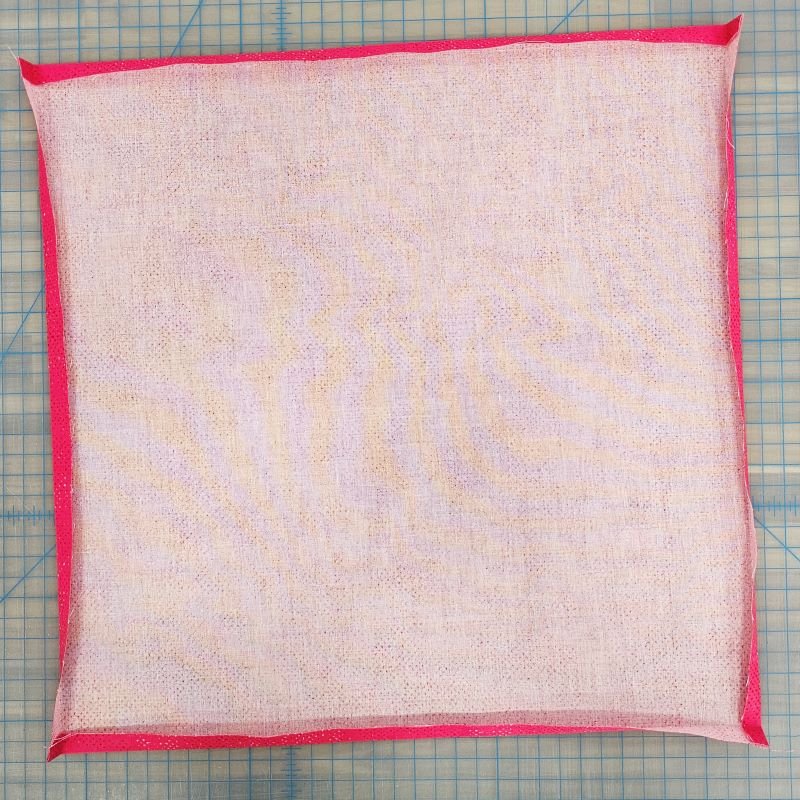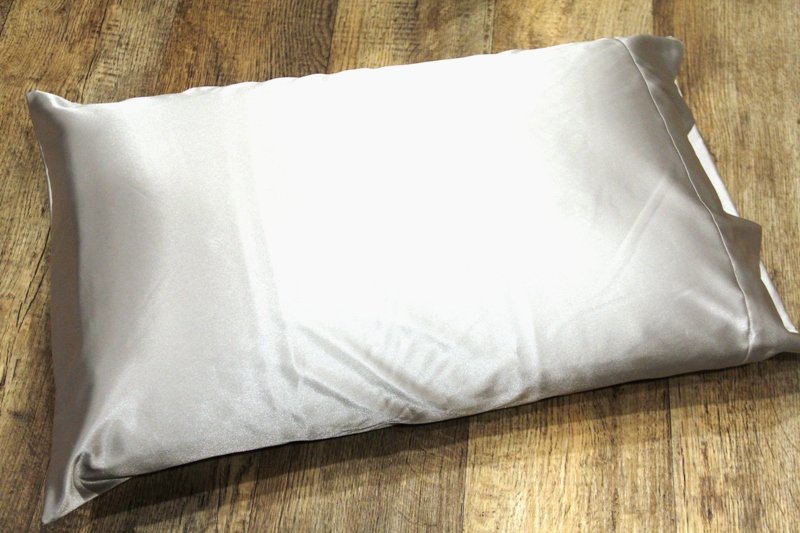Triple the love with this heart table runner!
I’ve been sharing tutorials on my blog for over a decade, and I’m frequently asked how they can be printed or saved. The answer is here! You can find this printable tutorial in my shop, which contains the instructions, color photos, and templates from the original blog post, without the extra things you don’t need to make the project. The file is in PDF format, so you can either print or save it to your computer.
I don’t have a lot of flat surfaces in my house where cute, quilted things can be placed. That means table runners are the star around here.
This one measures 16" x 36" once it’s finished, so it’s just big enough to make an impact, but small enough to use on most dining tables. And the hearts make it perfect for this time of year!
As you go through the instructions, keep all those triangle shapes you’ll cut off. I’ll show you a bonus project at the end!
To make this table runner you’ll need:
1/3 yd white cotton fabric
1/3 yd black cotton fabric
1/4 yd light pink cotton fabric
1/4 yd medium pink cotton fabric
1/4 yd dark pink cotton fabric
1/2 yd cotton fabric for backing
1/3 yd cotton fabric for binding
18" x 38" batting
Cut the following:
white fabric
A (8) 2 1/2" x 2 1/2"
B (8) 2 1/2" x 6 1/2"
C (3) 2 1/2" x 12 1/2"
black fabric
D (4) 2 1/2" x 2 1/2"
E (10) 2 1/2" x 6 1/2"
F (3) 2 1/2" x 12 1/2"
light pink fabric
G (6) 2 1/2" x 12 1/2"
medium pink fabric
H (6) 2 1/2" x 12 1/2"
dark pink fabric
I (6) 2 1/2" x 12 1/2"
backing fabric
J (1) 18" x 38"
binding fabric
K (4) 2 1/2" x width of fabric
batting
L (1) 18" x 38"
Before you begin:
All pieces are sewn right sides together (RST).
All seams are 1/4" unless indicated otherwise.
When instructed to trim, that means trim 1/4" from the stitching line.
When instructed to press to a color, direction, or the name of a piece, that refers to the direction for pressing the seam.
This quilt is assembled by making two units for each heart, sewing those together, and adding the final pieces at the top and bottom edge.
To begin the quilt, sew together three light pink G pieces, side-by-side. Sew the remaining three light pink G pieces side-by-side. Press seams to the right.
Repeat the same process with the (6) medium pink H. Press seams to the right.
Repeat again with (6) dark pink I. Press seams to the right.
Sew (1) black E to the right of (1) white B. Sew a second black E to the left of the same white B.
Sew (3) more units in the same manner. Press all seams toward the black. We’ll refer to these as EBE units.
Sew (1) white B to the left of (1) black E. Sew a second white B to the right of the same black E.
Sew a second unit in the same manner. Press all seams toward the black. We’ll refer to these as BEB units.
Using a fabric safe pen, draw a diagonal line on the wrong side of (8) white A and (4) black D.
On (1) light pink G unit, with the seams running vertically, place (1) white A on the upper left corner with the drawn line from the upper right to lower left.
Place (1) white A on the upper right corner of the same G unit, with the drawn line from the upper left to lower right.
Repeat with the second light pink G unit.
Stitch on the drawn lines.
Trim each corner. Press the seams toward the light pink.
Repeat these steps with (4) black D and (2) medium pink H units.
Press the seams toward the medium pink.
Repeat once more with the remaining (4) white A pieces and the (2) dark pink I units. Press toward the dark pink.
Lay out (1) EBE unit with the seams running vertically and the wrong side up. Using a fabric safe pen, draw a diagonal line from the upper left corner to the lower right corner.
Lay out one light pink G unit with the seams vertical and the white A pieces at the top. Place the EBE unit right side down, even with the lower edge, with the line from the upper left to lower right.
Stitch on the drawn line. Trim the corner. Press the corner out and the seam toward the light pink. Save these corners, and all those to follow, for the bonus project at the end.
Lay out (1) EBE unit with the seams vertical and wrong side up. Draw a diagonal line from the lower left corner to the upper right corner.
Lay out the second light pink unit G with the seams vertical and white A pieces at the top. Place the EBE unit even with the lower edge and the line from the lower left to the upper right.
Stitch on the drawn line. Trim off the corner. Press the corner out and the seam toward the light pink.
You should have two light pink units that are opposite each other.
Repeat this process with the (2) medium pink units, using the (2) BEB units. Press the seams toward the medium pink.
Sew the remaining (2) EBE units to the (2) dark pink units using the same method. Press the seams toward the dark pink.
Place the (2) light pink units with right sides together, matching the seams, with the black and white stripes on the left. Sew near the right edges to create a heart. Press the seam to the left.
Repeat with the (2) medium pink units.
Repeat with the (2) dark pink units.
Sew (1) black F to the upper edge of the light pink heart. Sew (1) white C to the lower edge. Press the seams toward the black.
Flip the medium pink heart upside down, with the point up. Sew (1) white C to the bottom edge and (1) black F to the lower edge. Press the seams toward the black.
Sew (1) black F to the upper edge of the dark pink heart and (1) white C to the lower edge. Press the seams toward the black.
Lay out the (3) hearts side by side.
Sew the right side of the light pink heart to the left side of the medium pink heart. Press the seam to the right.
Sew the dark pink heart to the right of the medium pink heart. Press the seam to the right.
Lay the backing fabric out, right side down. Top with the batting. Center the heart quilt top over all, right side up. Pin well.
Quilt as desired. Trim the backing and batting to match the top.
After cutting off the selvages, sew the binding strips end-to-end to create one continuous strip. Sew the binding around the edge, using your favorite method, to finish.
I love the contrast of this runner. But wait a minute….I promised you a bonus project! How about a Lonely Triangles Placemat? Did you save all those cut-off triangles?
If you did, you should have:
(4) EBE (black, white, black)
(2) BEB (white, black, white)
(2) light pink
(2) medium pink
(2) dark pink
I did not use the small triangles cut from the A and D corners on each heart.
The finished placemat measures about 10" x 15".
You’ll also need:
(1) 15" x 20" backing fabric
(2) 2 1/2" x width of fabric fabric strips for binding
(1) 15" x 20" batting
Lay out the triangles as shown below:
Sew the diagonal edges together within each square. Be careful not to stretch, because these are bias edges. Press each seam toward the pink.
Trim each of the (6) squares to 5 1/2" x 5 1/2"
Lay out again as shown, or alter the layout to your preference. Sew the squares into vertical rows. Press the left and right seams to the top and the middle row to the bottom.
Sew the rows together to complete the top.
Lay the backing right side down. Top with the batting. Lay the quilt top in the center. Pin well.
Quilt as desired.
Trim the backing and batting to match the top.
After cutting off the selvages, sew the binding strips end-to-end to create one continuous strip. Sew the binding around the edge, using your favorite method, to finish.
Two great projects, with minimal waste. All the hearts! 💖💖💖

















































































































































































































































































































































































































































































